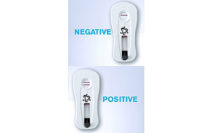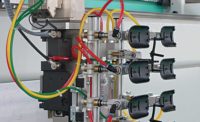"Scratch-resistant plastic parts" is more than a phrase with great appeal to car buyers. It also presents a great challenge to automotive Tier 1s to make sure these parts perform as promised in the real world.
Many suppliers meet this challenge by mixing a small amount (typically 1 percent) of migrating additives with polymers prior to injection molding their plastic parts. After molding, the plant-derived additives accumulate at the surface to form a thin film that improves scratch resistance.
UK-based Croda International Plc is a leading supplier of migrating additives that regularly tests treated parts to validate additive effectiveness. Testing involves scratching the part surface with a standardized tool at a defined force of 1 to 20 newtons, and then measuring the depth, width and profile of the thin film to determine if there are any differences between their compositions.
Initially, Croda scientists used a wide-field optical microscope to measure the scratch width, and a white-light interferometer to determine scratch depth by visualizing the scratch profile. However, this approach proved very time consuming due to the complexity of setting up the interferometer and analyzing its results.
Another problem with interferometry is it produces high variability between users and artifacts (damage caused by a preparation technique) in the surface profiles, such as the presence of spikes in porous materials like polypropylene. These variations are the result of the interferometer not properly detecting the surface.
“The test leaves a scratch and two mounds on either side—similar to a plough going through a field,” notes Martin Read, Croda’s lead scientist on anti-scratching and team leader for polymer additives applications. “And setting up the interferometer is extremely difficult. It takes about an hour to get one scratch measurement.”
Late last year, Croda looked into an alternative to its optical microscope-interferometry (OMI) method that would increase measurement
precision and efficiency, and reduce operator variability. The company eventually decided to have its scientists use an LEXT OLS5000 confocal microscope from Olympus Corp.
Confocal microscopes use pinholes to detect light from a well-defined point in 3D and discard all out-of-focus light, whereas wide-field optical microscopes illuminate an entire specimen at once. Confocal microscopes also offer better resolution and feature laser-scanning algorithms that create precise 3D maps for a range of visualizations and measurements.
By using the LEXT OLS5000, researchers can now measure scratch depth and profile to the nearest 10 nanometers. They are also able to obtain a smoother image of the scratched surface to facilitate a more accurate measurement with fewer human errors. Equally important, the LEXT microscope (and operating software) performs scratch width and depth measurements and analysis up to 100 times faster than the OMI approach.
“With the old technique, all four people in our department could get a different result from the same sample,” notes Martin. “Because the LEXT system accurately measures in 3D, we simply view a slice through the scratch and measure depth. It’s much easier, [and lets us] measure and process 10 scratches on a plastic surface in 2 minutes.”
For more information on confocal microscopes, call 484-896-5000 or visit www.olympus-ims.com.




